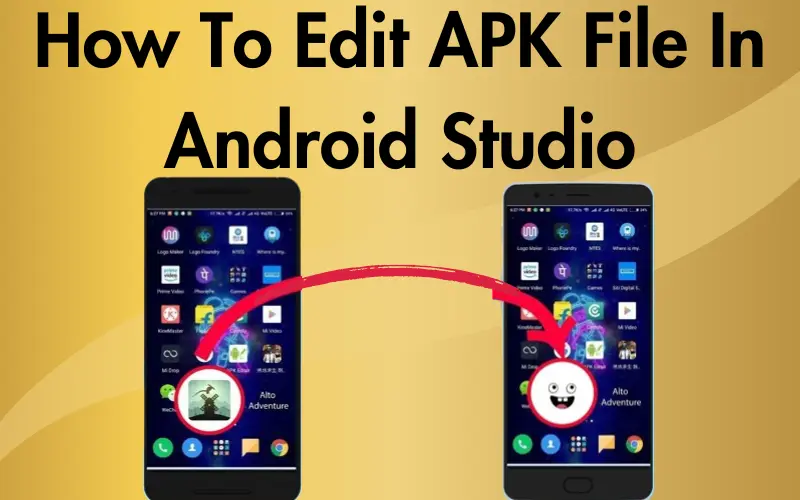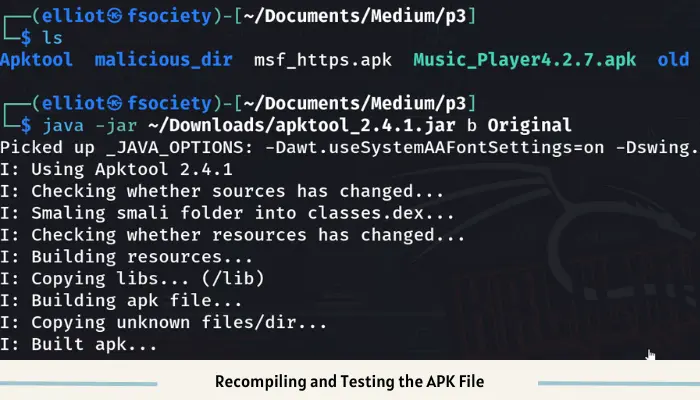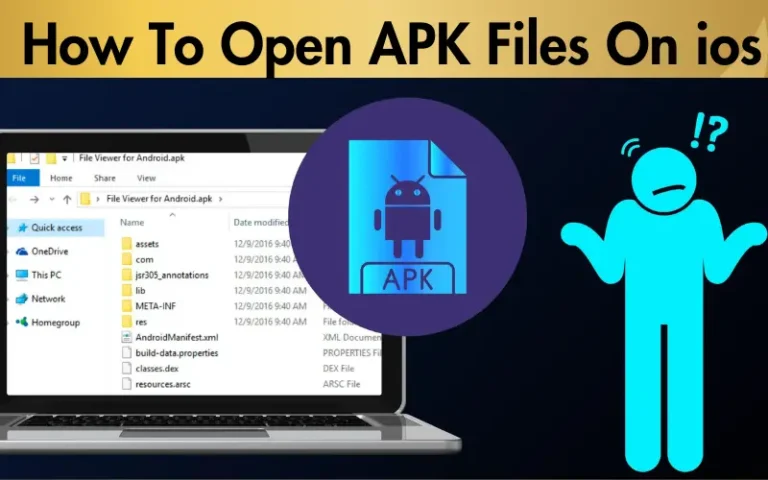How To Edit APK File In Android Studio [3 Steps Guide]

Navigating the world of Android development, especially when it comes to customizing APK files, can sometimes feel like trying to decipher an ancient script. You’re not alone if you’ve ever found yourself puzzled over how to edit apk file in Android Studio. This challenge, while daunting at first glance, is one that many app developers and tech enthusiasts face. The quest to tailor an app to fit specific needs or to imbue it with a unique flair is a journey filled with both excitement and hurdles.
Here’s the good news: your quest ends here. We’re about to embark on a detailed exploration that promises not only to guide you through the process of editing APK files in Android Studio but to do so in a way that’s both insightful and accessible. Whether you’re aiming to tweak an app’s functionality, inject new features, or simply satiate your curiosity about the inner workings of Android applications, you’ve come to the right place.
Our solution comes backed by a solid foundation of expert knowledge and hands-on experience. Through a step-by-step guide, we will unveil the secrets of APK editing, starting from the basics of Android Studio and moving through the intricate process of decompiling, editing, and recompiling your APK files. This guide is crafted with precision, ensuring you have a clear path forward, equipped with practical tips, tools, and best practices. So, let’s dive into the digital alchemy of transforming APK files, turning your visions into reality.
Table: APK Editing Tools Comparison
| Tool | Description | Pros | Cons |
|---|---|---|---|
| APKTool | Command-line tool for decompiling and recompiling APK files | Free and open-source | Requires some technical knowledge |
| Jadx | GUI tool for decompiling APK files into Java source code | User-friendly interface | Limited functionality for editing |
| dex2jar | Converts dex files to Java class files for deeper analysis | Useful for analyzing bytecode | Not as intuitive for editing |
| Android Studio | Integrated development environment with built-in APK editing tools | All-in-one solution for app development | Steeper learning curve for beginners |
This table provides a comparison of different tools commonly used for editing APK files in Android Studio. Depending on your needs and preferences, you can choose the tool that best suits your editing workflow.
Getting Started with Android Studio
Overview of Android Studio
Android Studio is the official Integrated Development Environment (IDE) for Android app development, based on IntelliJ IDEA. It provides the fastest tools for building apps on every type of Android device. With a rich set of development tools, Android Studio offers a seamless experience from app conception to completion.
How to Install and Set Up Android Studio
Installing Android Studio is straightforward:
- Visit the official Android Studio website and download the installer.
- Run the installer and follow the on-screen instructions to complete the installation. This will include downloading the Android SDK and setting up the Android Emulator.
- Once installed, launch Android Studio and go through the initial setup wizard to configure the IDE to your preferences.
How To Edit APK File In Android Studio
How to Find and Select the APK File You Want to Edit
APK files for editing can come from various sources. You might download them from the internet, extract them from a device, or receive them from another developer. To begin editing, you first need to locate your APK file. If you’re working on an app you developed, you can export the APK from Android Studio itself.
Tools and Prerequisites for Editing APK Files
Before diving into editing, you’ll need a few tools:
Ensure these tools are installed and properly set up on your computer. Having them ready will streamline the process of decompiling, editing, and recompiling your APK files, paving the way for a smooth editing journey.
Decompiling the APK File
Step-by-Step Guide to Decompiling APK Files
Decompiling an APK file is the first step to editing. Here’s how to do it:
- Use APKTool: Open your command line or terminal and navigate to the folder containing your APK file. Use the command
apktool d your_apk_name.apkto decompile it. This command creates a folder with the same name as your APK file, containing the decompiled resources and source code. - Extract Classes.dex with dex2jar: For deeper analysis or modification of the app’s source code, extract the
classes.dexfiles from the APK and convert them into Java class files using dex2jar. Run the commandd2j-dex2jar classes.dexfrom the terminal.
Tools and Methods for Decompilation
- APKTool is your go-to for extracting files and resources.
- dex2jar helps in converting dex files to a more understandable Java class format.
- JD-GUI: Use this to view the source code converted by dex2jar.
Editing the APK File
How to Navigate the Decompiled APK Files
After decompiling, you’ll find various folders and files:
Editing Resources, Assets, and Code within the APK
- Resources and Assets: Use a text editor to modify XML files for resources or replace image assets with your versions.
- Smali Code: Editing smali files requires understanding of assembly language. Simple changes like string values can be done directly. For complex changes, it’s recommended to edit the Java code and recompile it to smali.
Recompiling and Testing the APK File
Steps to Recompile the Edited APK File
- Recompile with APKTool: Run
apktool b your_apk_name(the folder name), which will generate a new unsigned APK in thedistfolder. - Sign the APK: Use
jarsignerto sign your APK with your keystore. If you don’t have a keystore, you can create one using thekeytoolcommand.
How to Test the Edited APK on a Device or Emulator
- Transfer the APK: After signing, transfer the APK to your Android device or use the
adb install your_signed_apk.apkcommand to install it on an emulator or connected device. - Testing: Open the app on the device or emulator. Navigate through the app thoroughly to ensure your edits work as expected. Pay attention to the functionality or visual changes you made.
This process, from decompiling to testing, allows developers and enthusiasts to tailor apps to their specifications, opening a world of customization options.
Signing the Edited APK
Importance of Signing the APK
Signing your APK is a critical step before distribution. It serves as a digital signature that verifies the authorship of the app and ensures that the app has not been altered or tampered with since it was signed. Without a valid signature, your APK cannot be installed on any device.

Guide to Signing the APK Using Android Studio or External Tools
- Android Studio: Use the built-in Generate Signed APK Wizard. Navigate to Build > Generate Signed Bundle / APK, and follow the prompts. You’ll need a keystore file; if you don’t have one, Android Studio can help you create it.
- External Tools: Use
jarsigner, a tool included with the JDK. The command looks something like this:jarsigner -verbose -sigalg SHA1withRSA -digestalg SHA1 -keystore your_keystore_name.keystore your_apk_name.apk your_alias_name. Remember to replace placeholders with your actual keystore and APK names.
Troubleshooting Common Issues
Addressing Common Problems Faced During the Editing Process
- Decompilation Errors: Ensure you’re using the latest version of APKTool. If certain files can’t be decompiled, try using different tools like Jadx for a more granular approach.
- App Not Installing: This usually indicates a problem with signing the APK. Verify that you have signed your APK correctly and with the appropriate keystore.
Tips and Best Practices for a Smooth Editing Experience
- Back Up Your APK: Always keep a copy of the original APK file. This allows you to start over if something goes wrong.
- Incremental Changes: Make and test small changes one at a time. This approach makes it easier to pinpoint errors.
- Use Version Control: If you’re working with the source code, version control systems like Git can help you manage changes and revert to previous versions if needed.
Conclusion
Editing an APK file in Android Studio is a journey that opens up vast possibilities for customization and enhancement of Android apps. We’ve walked through the steps of decompiling, editing, recompiling, and signing an APK, with a detour into troubleshooting common issues that might arise along the way.
This guide is just the beginning. The world of APK editing is vast and full of potential. With the tools and techniques at your disposal, you’re well-equipped to modify apps to your heart’s content. Remember, the best way to learn is by doing. So, I encourage you to dive in, experiment with your ideas, and see what amazing modifications you can bring to life in your Android applications. Happy editing!






